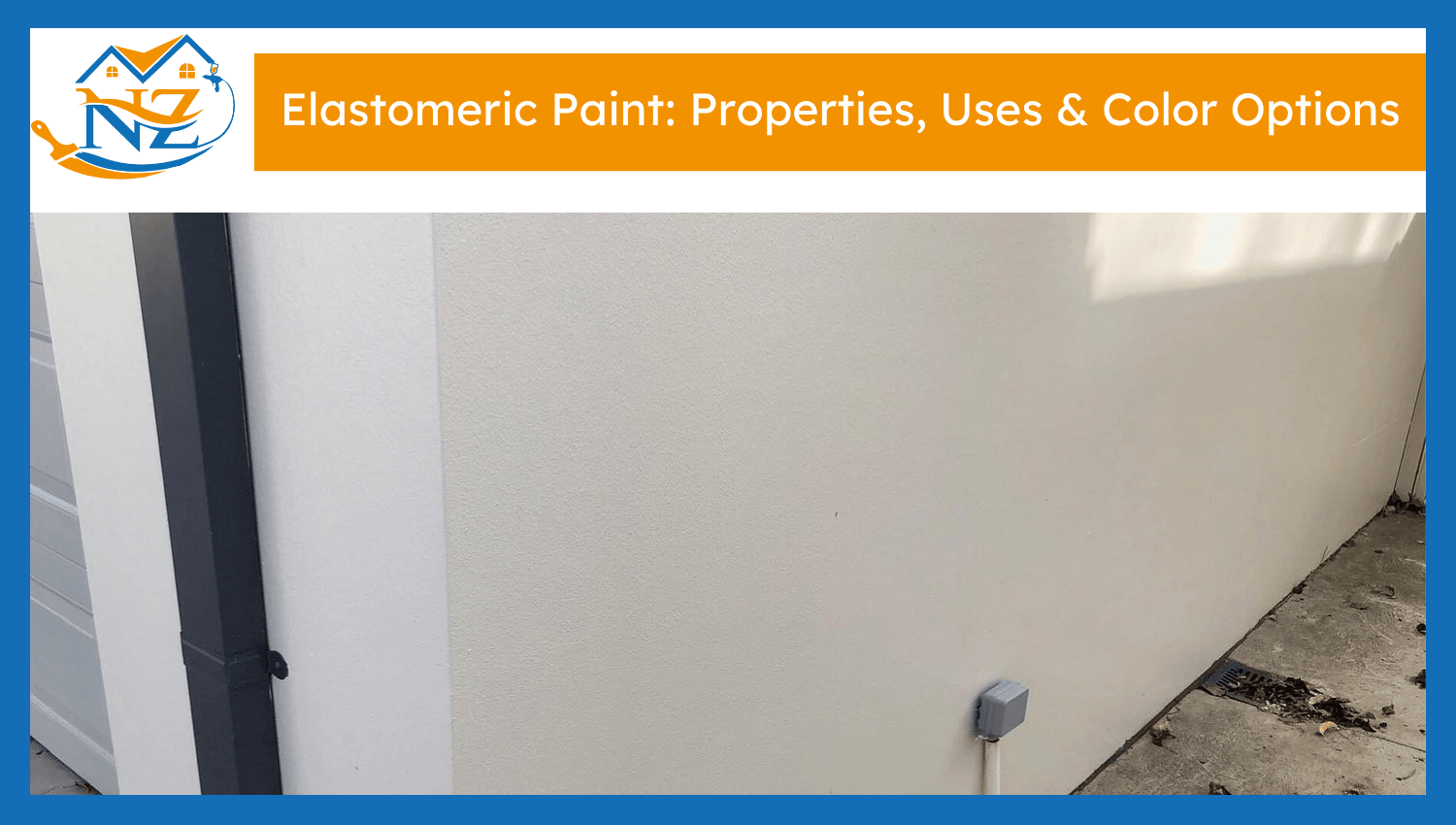

Elastomeric paint is a rubber-like, thick, waterproof coating used on external surfaces. It shrinks and stretches with temperature changes, and it is suitable even in places where it is likely to crack. Elastomeric paint creates a strong protective coating against water, extreme weather conditions, and UV rays. It is commonly used on stucco, concrete, masonry, and porous surfaces. Elastomeric paint has a very long color retention and flexibility that makes it a popular paint used in exterior surfaces of both commercial and residential buildings.
Here are the key properties of elastomeric paint:
| Property | Description |
|---|---|
| Type | Water-based or acrylic-based high-build coating |
| Finish | Smooth, slightly satin or matte depending on formulation |
| Application Areas | Exterior walls, stucco, masonry, concrete, brick, and EIFS |
| Durability | Excellent; flexible, weatherproof, and long-lasting |
| Drying Time | 4–6 hours (touch dry), 24–48 hours (fully cured) |
| Coverage | 3–6 m²/litre per coat (thicker application than standard paint) |
| Cost | Higher than regular paints; premium-grade |
| VOC Content | Low to moderate (depending on formulation) |
| Application Methods | Brush, roller (heavy nap), or airless spray |
| Availability | Available in buckets or drums |
| Color Options | Customizable; available in light-fast, exterior-grade tints |
| Shelf Life | 18–24 months (in sealed, cool, dry storage) |
Here are the 6 most common uses of elastomeric paint:
Elastomeric paint is 10 times thicker than regular paint; it blocks water and resists rain, sun, and heat. It helps in maintaining exterior walls dry in bad weather conditions.
It fills cracks and flows with the wall, even without cracking. It can be applied to stucco and EIFS that crack with time.
Elastomeric paint is applied on flat and metal roofs to prevent leakage. It reflects heat and reduces roof temperature. It also makes the roof durable.
It sticks strongly to concrete and masonry walls. The paint seals water and keeps the surface safe against sun and moisture damage.
Elastomeric paint is used on wood because it expands and contracts with the wood. It makes the wood more durable and prevents it from peeling off easily.
It is also used on basement walls, bridges, garden walls, industrial tanks, metal structures, and the edges of buildings. It is highly elastic and has good UV resistance, making it suitable to be use on high-exposure surfaces.
Elastomeric paint cannot be used everywhere. Its thick texture produces a rough and bumpy finish on smooth drywall. The paint on interior walls can also hold in moisture, causing damage to the surface over the long run. Elastomeric paint on high-traffic floors wears out quickly and becomes slippery unless it is specifically designed for floors.
Here are the 2 main steps for applying elastomeric paint:
Take a clean cloth and scrub the surface to get rid of dust, grease, and loose materials. Fix cracks by mixing a patching compound. Dry and stable surfaces allow better paint grip. Do not use elastomeric paint on wet surfaces or dusty surfaces.
Use a brush, a roller, or an airless sprayer to apply the elastomeric paint. Apply smooth strokes to cover up evenly. Better waterproofing is achieved with 2 coats. Apply the first coating and allow it to dry fully, then apply the second layer to get a good, flexible seal on the surface.
Yes, you can paint over elastomeric paint, but with another elastomeric or compatible coating, such as acrylic latex. Oil-based paints can not stick properly due to the flexible, non-porous surface.
Yes, it provides excellent waterproofing, crack resistance, and UV protection. Elastomeric paint is especially suitable for stucco, concrete, and masonry surfaces where long-term durability is needed.
Elastomeric paint normally lasts 10–15 years on roofs and 7–10 years on walls when applied properly. Its durability depends on surface type, climate conditions, and application quality.
Oil-based gloss paint provides a hard, smooth, and tough finish. It suits doors, trim, and metal surfaces because it sticks easily and does not wear out. It dries slowly but gives a rich, long-lasting gloss finish.
Water-based gloss paint is fast-drying, less fuming, and washable. It is commonly applied to interior walls, woodwork, and furnishings. It does not change color, turning yellow, and keeps a bright, smooth look.
Enamel gloss paint produces a smooth, hard, and glossy surface. It is waterproof and resistant to heat and thus is ideal on kitchen cabinets, bathroom walls, and on the outside facing wood or metal surfaces. It is ideal for high foot traffic areas where toughness and waterproofing are essential.
Polyurethane gloss paint is useful because it not only provides gloss but also provides protection. It is also usually used on wooden furniture and flooring. It helps to resist scratches, water, and chemicals, and also enhances the natural color of a surface.
Spray gloss paint gives a smooth and even surface with no brushstrokes. It is ideal in small-scale projects, craftworks, and difficult-to-reach places. It can be easily applied and produces a glossy appearance.
Below are the 2 main steps to get a smooth and reflective gloss paint finish:
Carefully clean the surface to get rid of dust, grease, or old flaking paint. Sand it smooth to make a smooth foundation and enable the gloss paint to have good sticking. Apply a primer that is suitable for gloss finishes, especially on porous or uneven surfaces, to give the best results. Remove the dust particles with a tack cloth before painting.
Apply with a brush, foam roller, or spray to achieve a smooth finish. Use thin and smooth layers to remove the marks of the brush. It takes 1 hour to dry between coatings. Gloss paint takes 24 hours to cure completely to give a hard and reflective surface.
Here are the populat gloss paint colors: